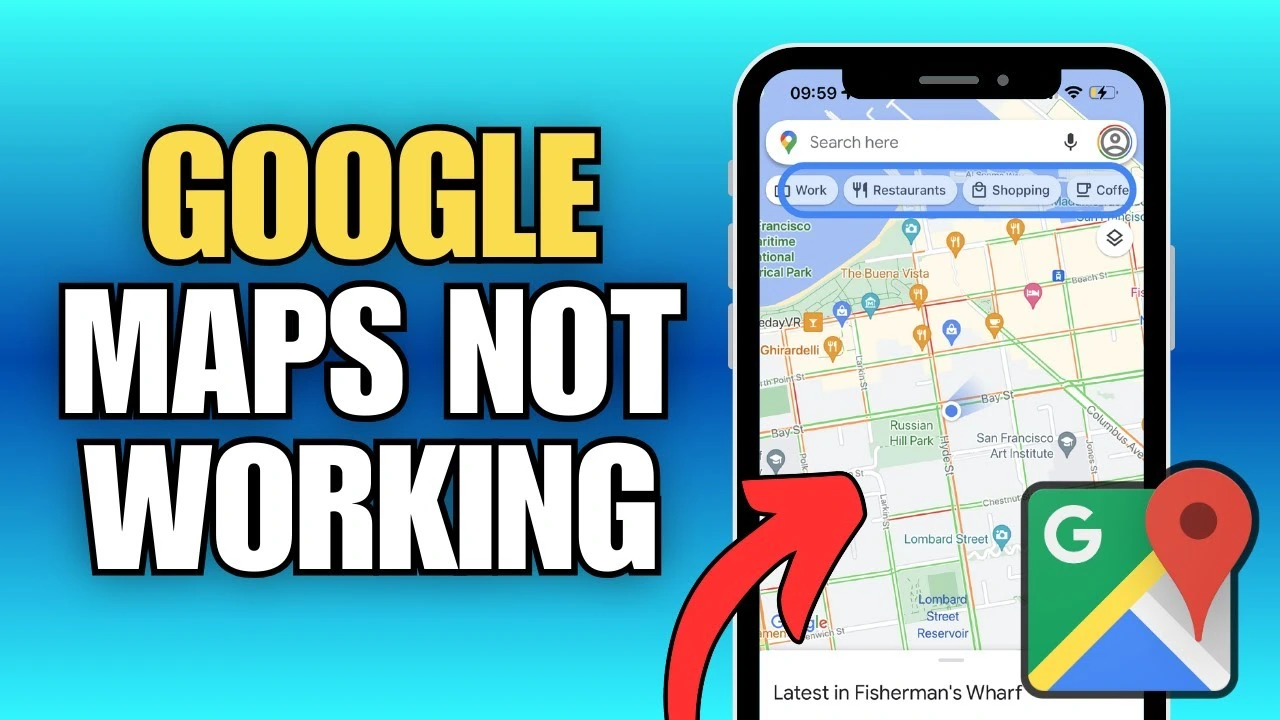For millions of people across the globe, the day felt unusually chaotic as Google Maps not working today became a trending concern. At its peak, thousands of users reported that the mobile app failed to load maps, show routes, or even connect to the server.
The disruption, which lasted several hours, was not just another glitch in the system. It revealed something much bigger our society’s growing dependence on a single digital infrastructure to move, trade, and function.
What Actually Happened During the Outage
Reports surged on Google Maps reports on Downdetector, where over 4,000 complaints were filed within hours. While the web version of Maps remained functional.
The Android and iOS apps became nearly useless. Users described blank screens, frozen maps, and recurring alerts such as Google Maps cannot reach server.
Behind the scenes, Google confirmed the issue stemmed from a breakdown in its Maps SDK and Navigation SDK, which are the technical backbones powering live app navigation.
These aren’t just for individual users they also fuel countless third party applications, ride hailing services, and delivery platforms.
By 6:27 PM ET, Google announced the Google Maps outage had been resolved, but promised to publish a deeper analysis of the incident.
At first glance, this may look like a minor Google Maps app issue, but the ripple effects were significant. Consider this, Delivery fleets, rideshare drivers, and courier services rely on Maps APIs.
A sudden Google Maps service disruption can cost companies thousands of dollars in lost productivity. Commuters who faced Google Maps error message during rush hour were left scrambling for alternatives.
Visitors in unfamiliar cities suddenly found Google Maps not loading on Android or iPhone, undermining their confidence in digital navigation.
This was not just about a map app crashing it was a stress test of how modern cities and economies depend on a single digital infrastructure.
A delivery driver shared online that when he saw his Google Maps not loading on iPhone, he missed two drop offs before switching to Waze. The outage translated directly into financial loss.
A commuter in NYC reported missing her train connection because the Google Maps down issue prevented her from checking real time transit updates.
A tourist navigating Paris without local knowledge admitted that the Google Maps app issue left him wandering for an hour before he found his hotel.
These stories underline how outages extend far beyond inconvenience. They interrupt lives, businesses, and mobility.
Why This Outage Was Different
Every app faces downtime occasionally, but what made this incident notable was its concentration in mobile SDKs. Unlike a server crash, which often impacts all platforms, this problem only hit mobile apps, leaving the web untouched.
Is SDK Integration Becoming a Weak Point? As Google expands Maps into cars, smart devices, and third party platforms, reliance on SDKs grows.
The Google Maps Navigation SDK problem highlighted how a single bug can cascade into multiple industries.
Is Diversification Needed? With so many sectors locked into Google Maps APIs, there’s growing concern about whether businesses should diversify their mapping dependencies.
Outages like this create windows for alternatives Apple Maps, HERE WeGo, and even smaller services like Mapbox may benefit when Google Maps down becomes global news.
Technology analysts and industry experts were quick to weigh in, Sarah Kim, Transport Analyst. Navigation apps have become critical infrastructure. When Google Maps not working today affects millions at once, it shows we need redundancy in mobility systems.
Michael Green, IT Systems Consultant, SDK outages are more dangerous than app level glitches. They impact not just users, but also every company building on top of Google Maps.
David Liu, Logistics Manager, During the Google Maps service disruption, our fleet productivity dropped by 12%. It’s a clear reminder that no single platform should dominate logistics.
The Google Maps outage wasn’t just about broken directions. It exposed three major lessons, Digital Monopolies Create Fragility
When one company dominates, failures affect everyone.
Businesses Need Backup Systems
Relying solely on Google Maps is risky. Diversification is not optional anymore.
Users Must Be Prepared, Outages show why offline maps and secondary apps matter, especially for travelers and professionals.
This incident may be remembered as one of the most revealing tech hiccups of the year. While Google will publish its own technical report, the deeper narrative is about resilience and adaptability in a digital first world.
If Google Maps not working today could disrupt daily life for millions, what would happen if it went offline for days or weeks? That’s the uncomfortable but important question this outage has forced industries and individuals to ask.
The brief but impactful case of Google Maps not working today was more than a temporary annoyance. It was a warning signal about how fragile our modern navigation ecosystem is.
The event reminds us that,, No system is infallible. Businesses must diversify their navigation tools. Individuals should expect and prepare for digital disruptions.
As cities and industries grow more dependent on digital maps, the lessons from this Google Maps outage will only become more relevant.
👉 What’s your take? Did this outage affect your day or work? Share your thoughts below and join the conversation.

